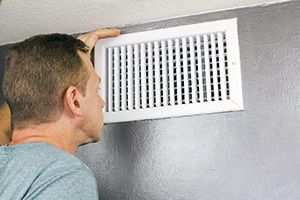 Mold can be found almost anywhere, including in your home and in your home’s heating, ventilating and air conditioning (HVAC) system. It grows where moisture is present, and when it comes to your HVAC system, the most common areas of growth are in ductwork, drip pans, or air conditioning coils.
Mold can be found almost anywhere, including in your home and in your home’s heating, ventilating and air conditioning (HVAC) system. It grows where moisture is present, and when it comes to your HVAC system, the most common areas of growth are in ductwork, drip pans, or air conditioning coils.
If you or any of your family members are experiencing cold-like symptoms on a regular basis, it might be time to have your house checked for mold. Common reactions to mold include sneezing, a runny nose, watery eyes, or nasal congestion.
What Is Mold?
Mold is a type of fungus. It reaches below the surface of materials and can be tough to kill. If left unattended, it can cause illness. Mold grows on plants, walls, floors, and roofs, and it is often found in dark or damp areas like a bathroom, attic or basement.
Causes and Signs of Mold in Your HVAC System
- Take a tour of your home and look for visible signs of mold. Look at registers, ductwork, drip pans, and evaporator coils to see if there is anything visibly growing on them. Look for areas of pooling water, any blocked drains, and condensation on vents or inside a register. Inspect your HVAC system for moisture. Be sure that ducts and system components are free of any moisture.
- Next, put your nose to the test. Is there a strong musty smell throughout your home? If you can’t see any signs of mold, but notice the odor, call a professional to inspect your system. If mold is growing in air ducts or other parts of your air conditioning system, it should be looked at immediately.
- If you see evidence of long-term water problems like water stains, discolored walls, floors or ceilings, peeling or cracking paint, damp walls or surfaces, check it out immediately. Mold grows where moisture is present, and it may have developed after a past leak, a flood in your home, hard rain or snowfall, condensation on windows, rusted pipes or high humidity.
- If anyone in your family is experiencing recurring respiratory symptoms, call in a professional. Do annual mold inspections, especially if you have children or elderly adults living in your home that are prone to being sick.
Call in a Professional When
- Cleaning methods do not eliminate the mold. See this blog post for ways you can prevent the growth of mold and mildew.
- You have an area of mold that is larger than 10 square feet. That could indicate more areas of mold you might not be able to see.
- The mold has spread into walls and insulation.
- You suspect that the HVAC system may be contaminated with mold.
